Paces Races Restoration Progress February 20
I continue to disassemble the odds wheel. There are some challenges with square set screws and dirt. One of the patented devices, a clutch, needs to be removed.
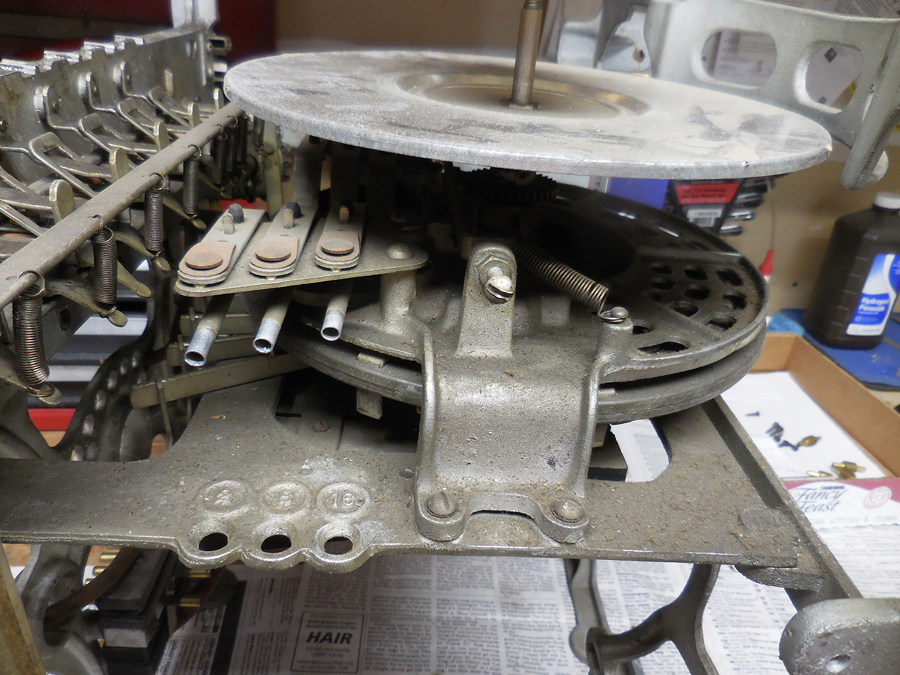
The top of the odds wheel casting is very dirty. The underneath is very clean, providing an amazing contrast.
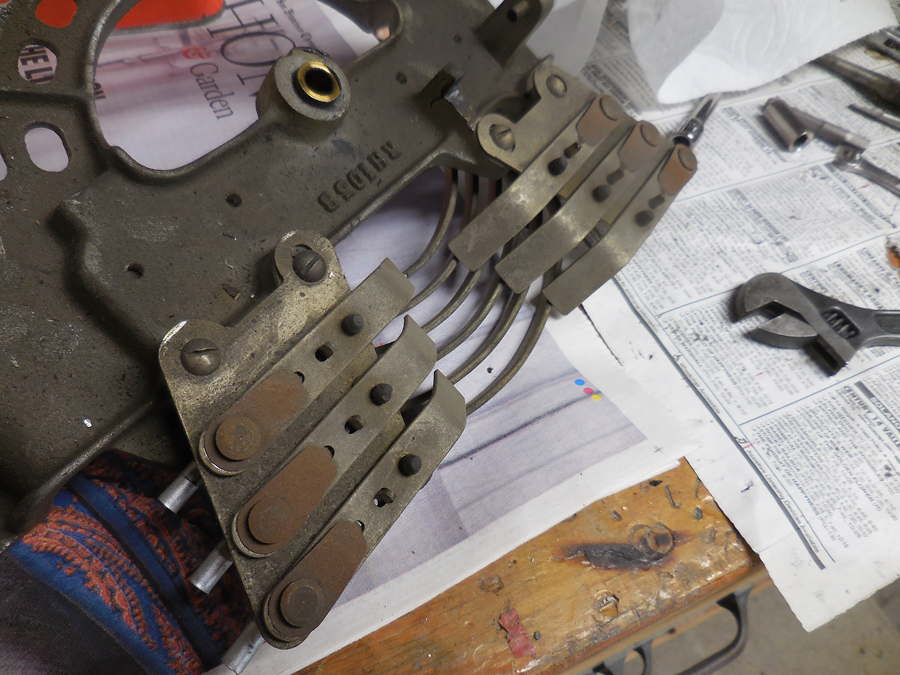
These fingers each touch a different ring. Each ring denotes a different payout value based on the position of the odds wheel. More on this later.
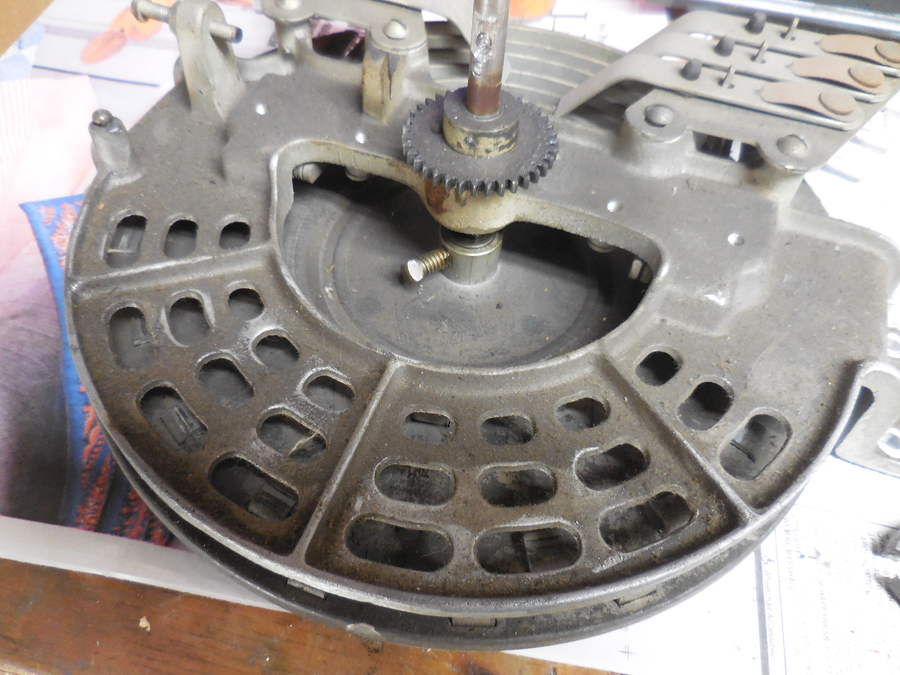
One of the challenges when disassembling the odds wheel is the use of square headed set screws. Worse the set screws are often buried deep in the mechanism. This one is accessible though the big void in the casting. Others were as far away with no access. Even now I am not sure what tool is used to loosen and tighten these.
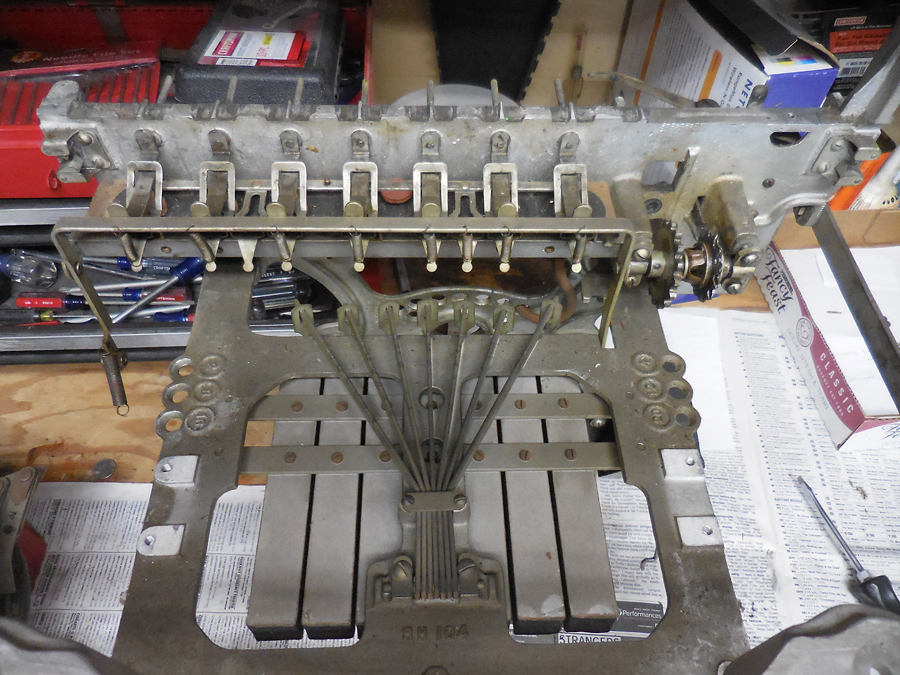
The winning horse creates a vacuum at the top finish line, which then collapses one of the bellows at the bottom. This bellows has a bracket attached to a finger, the seven levers merging at the center. These fingers are used to determine which horse wins how much.
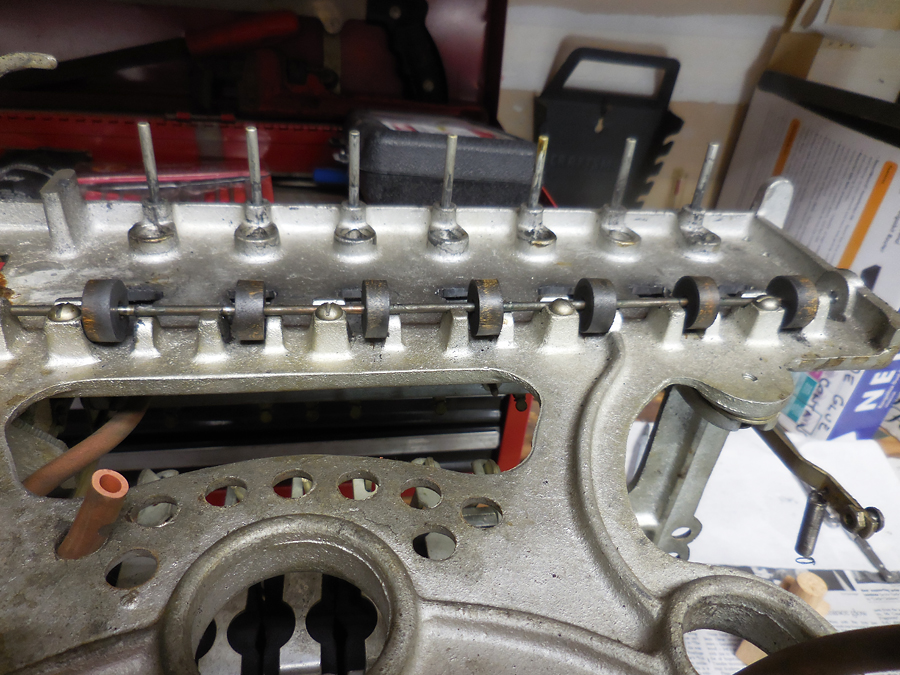
Looking up from the bottom of the frame member, the ratchet supports at this end of the game are wood wheels on an axle.
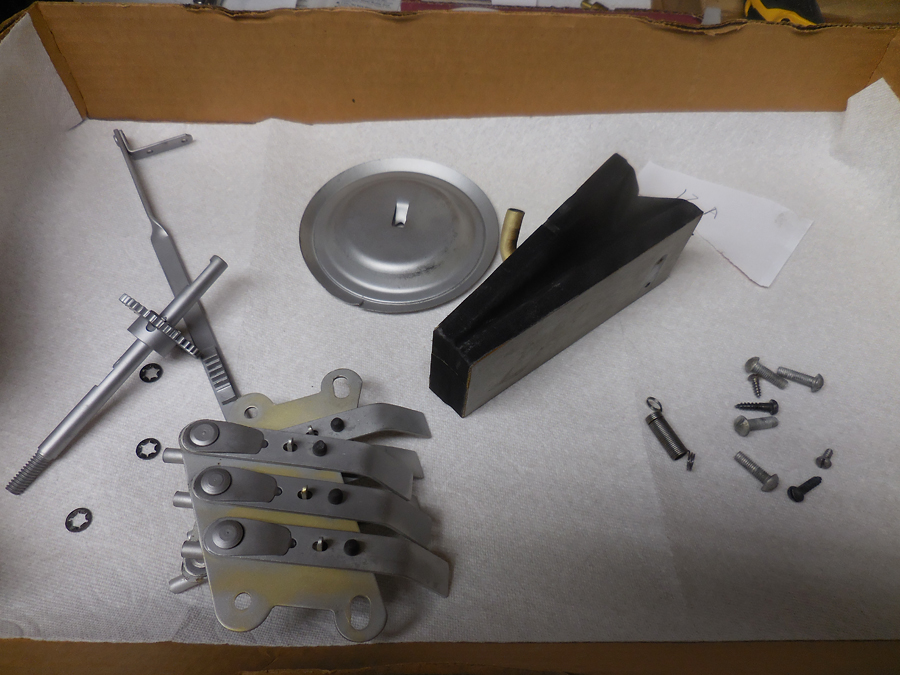
The fingers are cleaned, as is the odds wheel spinning pneumatic and rack. One of the challenges in cleaning the finger is that it is assembled with a rivet. It moves only slightly and so the glass beads used in cleaning clog up the small gap. Repeated blasts of compressed air and moving the fingers help dislodge the beads. There is a small valve facing, where the black dots are on the fingers. There are no replacements for the rubber grommets so I will see if these are reliable and if not, create a solution using the same leather valve seals.
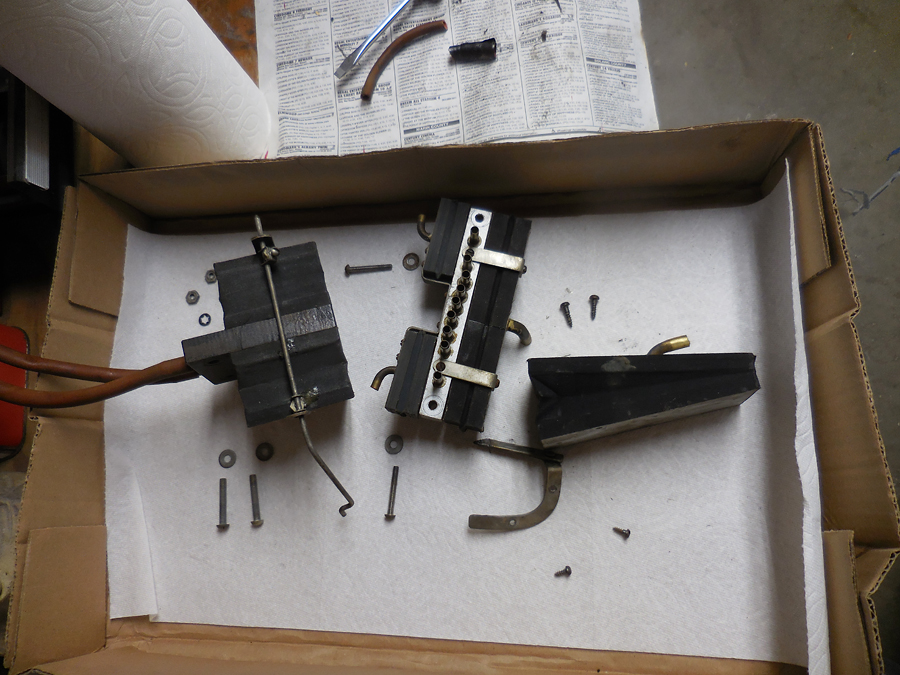
Here is the part that failed on the game and probably resulted in removing it from service. The left twin bellows are used to make the piano roll switch from forward to reverse and back. The left bellows causes the shuttle to reverse direction. The center bellows are used when the first horse reaches the finish line. The bellows raise up and release any vacuum signal to the individual horses, effectively stopping the horses from moving. This prevents a second horse from jumping at the last instant to the finish line, and preventing a second horse from winning. The bellows material crumbled in my hand, implying there were leaks and the game did not stop when the first horse reached the finish line.
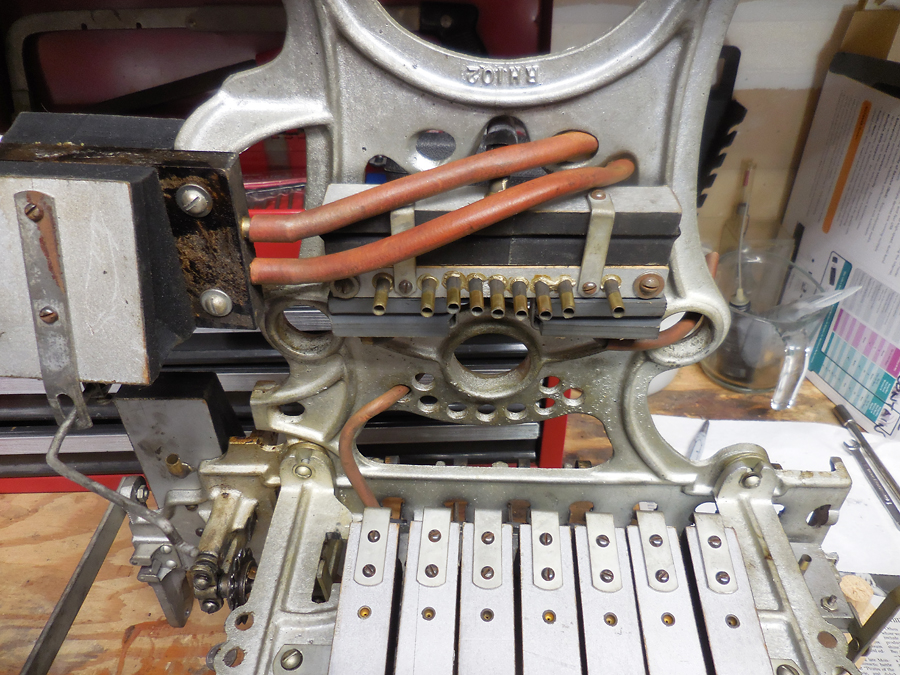
Here are the bellows in position on the frame. This view is looking up from the player piano mechanism position. The valve break is in the center with all the brass nipples. The reverse twin bellows are on the left with the two large tubes feeding them.

There is a clutch that protects the player piano mechanism from being forced by the motor and chain in the game. The chain drives the left sprocket and the right sprocket drives the player piano mechanism. Should something happen to the paper roll, the clutch will slip. The chain will continue to driver the left sprocket but the right sprocket will not turn. This mechanism is covered by a patent, frictional drive mechanism.
